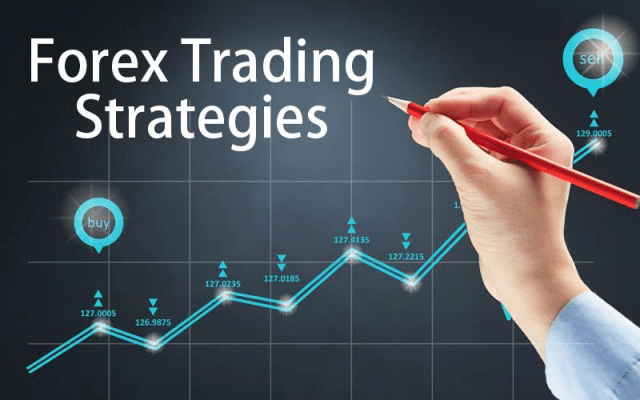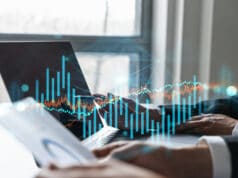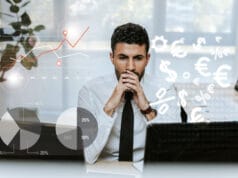Traders and institutions are resorting to hands-off approach strategies to trade the extremely volatile forex market. Computer programs and robots are slowly becoming the norm as traders seek to gain an edge in the highly competitive market place. While automated trading systems have become the new norm in the trillion-dollar marketplace, they don’t guarantee desired returns all the time.
What is Automated Trading?
Automated trading is a trading strategy whereby traders rely on computer programs to analyze price patterns to pursue trading opportunities. Some of the systems are configured to execute trades. One specific criterion is met, and exit trades, be it at a profit or loss as part of risk management.
Automated trading strategies are becoming increasingly popular, given their ability to eliminate human interference that often clogs objective decision making. Likewise, decision making with automated trading tends to be fast, making it possible for traders to take advantage of profit-making opportunities before human traders can spot them.
An automated trading system is slowly making manual trading obsolete, given the synergies always up for grabs. While algorithmic trading has been the domain of institutional traders, such technologies are slowly finding theirs into the retail space.
Automated Trading process explained
Automated trading system works by traders first establishing specific rules that determine how trades are opened and closed. The rules are then programmed to be executed automatically by a computer. The precise entry and exit rules integrated into computer programs are normally based on normal conditions such as moving average crossover or price action in Bollinger bands. Similarly, they can involve the computation of a vast amount of data on the news release.
Once trading rules are established and integrated into computer programs, a computer would monitor and scan the market to buy and sell opportunities based on pre-set trading strategies.
For instance, an automated trading system could be programmed to open long positions whenever the 21-day moving average rises above the 50-day moving average in the 15-minute chart. Similarly, the automated trading strategy could be programmed to enter a short position as soon as the price closes above the upper Bollinger band in the four-hour chart.
Besides, traders can program automated trading systems to trigger different market orders depending on market conditions. In this case, the system could trigger a market or limit market order. Provision for stop loss and profit-taking orders would also be perfectly integrated.
A comprehensive understanding of programming language specific to a given trading platform is essential. In this case, a programmer would be able to develop a program that is compatible with a given trading platform. In this case, the trading rules must be written in a trading platform, proprietary language.
How Automated Trading Strategies Lose Their Edge
Automated trading strategies are not immune to generating losses. Just like other trading strategies, they also struggle to generate desired results at times. The currency market is continually changing, given the millions of people who flock the market place searching for passive income.
Some automated trading strategies come with trading rules that focus on trend following. In this case, such systems are highly desirable for markets making higher highs in case of an uptrend and lower lows in a downtrend. However, in the case of range-bound markets, such strategies may struggle to identify profitable trading opportunities.

Likewise, the trend-following automated trading strategy would lose its edge in generating desired returns whenever subjected to markets in consolidation. Similarly, an automated trading strategy programmed to identify opportunities in range-bound markets would struggle to create trading opportunities in trending markets.
Over-optimization is another major drawback that sees most automated trading strategies lose their edge after some time. In this case, traders create systems that look great in paper and perform exceedingly well in demo accounts.
However, given the excessive curve fitting, the automated trading strategy may struggle to generate the desired results in live markets after some time. It is especially the case when market conditions change drastically.
An automated trading strategy is usually backtested on historical data. There is usually no guarantee that such systems would work when subjected to live market conditions.
How to Get It Right with Automated Trading Systems
No trading system can guarantee desired outcomes 100% of the time. Automated trading strategies are developed by humans and subjected to market conditions continually changing, making it difficult for them to generate the desired outcome of 100% of the time.
Likewise, it is essential to have a flexible mind while using automated trading systems to avoid the pitfalls that might come to play. That said, an automated trading strategy should not be rigid. Instead, it should be adjusted from time to time, incorporating new ideas in response to changing market conditions.
The forex market is constantly changing, and new ideas are always cropping up. Any trader leveraging automated trading strategies to trade the market should always be ready to tweak their trading strategies for desired and better outcomes.
Bottom Line
Automated trading strategies have proved to be highly effective in identifying and executing trades in the forex market. Their ability to reduce human emotional interference in decision making while encouraging rule-based trading has allowed traders to make fair use of trading opportunities in the market.
However, automated trading strategies don’t guarantee desirable returns 100% of the time. Technology does malfunction most of the time. Similarly, computerized strategies do struggle to identify trading opportunities whenever market conditions change drastically.
Therefore, it is important not to play blind trust in automated trading strategies. While automated forex trading capabilities are limited, they can be improved from time to time to ensure they generate desired returns most of the time.




